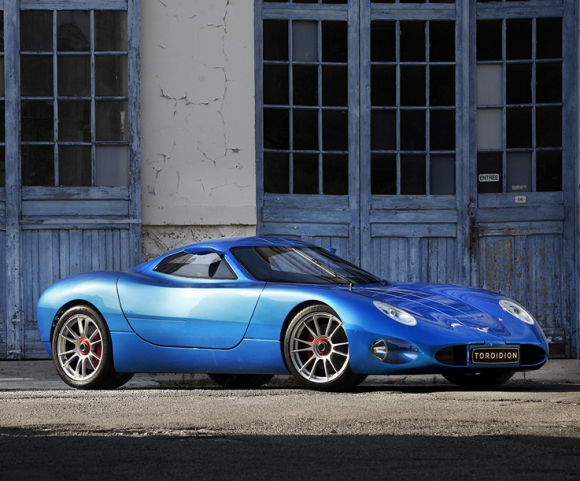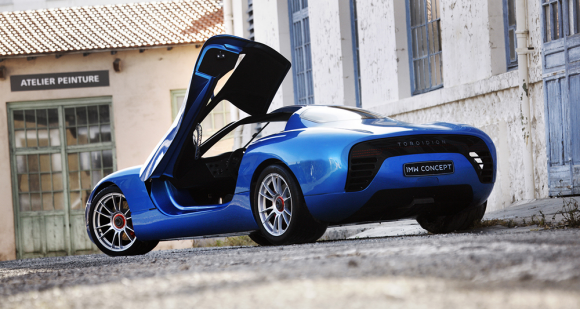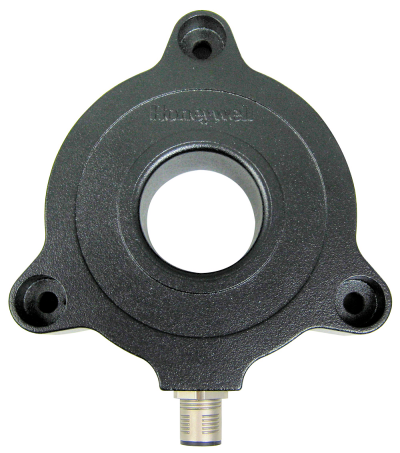
Steering and acceleration are two elements critical to controlling the movement of a car. Imagine, then, how critical they are for controlling a car moving at speeds up to 280 miles per hour.
At these speeds a car can travel 100 yards in less than a second, making sensors responsible for controlling the movement of the car among the most critical components to ensure driver safety. That's why Finland-based automaker Toroidion Oy decided to implement sensors which are normally used for their precision in applications such as heavy duty machinery. These sensors will provide precise steering wheel and accelerator pedal response for an electric powertrain car that features 1 megawatt of electrical power and the equivalent of 1,341 horsepower.
Founded in 2011, Toroidion's mission is to design a fully electric car that could compete in the 24-hour Le Mans endurance race – perhaps as soon as 2017 – where total driving distances often exceed 3,000 miles. Given the relatively short distances most electric cars can travel without recharging their batteries, Toroidion's car was designed to have a high-capacity battery that can be rapidly swapped out for a fresh one – whether in the pit lane of a race or the garage of the car's owner.
Designing a car that can outperform some the world's most high-performing race cars require extremely sensitive steering in order to ensure maximum safety, driver comfort and precise steering. In addition, the accelerator pedal must respond reliably and with enough sensitivity so that the driver can accelerate the vehicle at maximum power.

The Toroidion Supercar
Next page

Capable of traveling at speeds of up to 280 MPH, Toroidion Oy engineers worked with Honeywell to implement position sensors that would ensure drivers would have the most precise and reliable control of the car's steering and acceleration.
Enhancing Precision and Performance
To ensure the car met the high level of performance reliability and accuracy it needed, Toroidion decided to use sensors commonly used in heavy duty machinery. These sensors enable machines such as cranes and trucks to perform reliably in challenging and dangerous conditions. For example, a boom arm that pivots in in the middle needs steering sensitivity in a construction environment. This is the type of performance a supercar requires as well. Toroidion Oy worked closely with Honeywell to implement sensor technologies that met its high performance and precision needs and that could easily integrate with its car concept to enhance steering and acceleration precision.
The position sensors used in the Toroidion supercar – a linear sensor for the acceleration pedal and a rotary sensor for steering – are among the most adaptable and lightest in the industry. The linear sensor has a 0 to 35 millimeters (0 to 1.38 inches) sensing range and the rotary sensor has a 360 degree sensing range.

Honeywell SPS Series SPS-R360D-NBMS0101 SMART Position Sensors outfitted in the Toroidion Oy electric supercar are designed for heavy-duty industrial use, meeting some of the most stringent quality and reliability standards in the sensor standards.
These sensors use a patented arrangement of magneto resistive sensors to accurately and reliably determine the position of a magnet on a rotating or linearly moving object so that the object's position can be determined or controlled. Using an application-specific integrated circuit (ASIC), these sensors can essentially think for themselves in that they can calculate and verify the absolute angle of rotation or the position. Through this design, the position of moving parts can be captured in high precision – to within 1/100th of a degree or 0.04 millimeters.
The linear sensor is mounted on the gas pedal and detects the position of the pedal as it responds to the driver's feet. This sensor is also commonly used in industrial applications, such as valves, material handling, plastic molding and wafer handling; transportation applications, such as engine transmissions, truck-mounting crane outrigger positioning and hydraulic cylinders; and aerospace applications, such as regulating airflow to engines and environmental systems.
In addition, the rotary sensor in the car is mounted on the steering shaft to detect the rotation of the steering wheel. Since a small steering angle change will effect a big change in driving direction, this sensor had to be very precise in order to keep the car under control. This sensor is also used in transportation applications, such as boom arm detection, and industrial applications, such as solar panels and wind turbines.
These smart position sensors create a constant feedback loop that stays accurate over time as it measures movement in the steering wheel. This will ensure that the vehicle won't develop excessive 'play' in the steering wheel the same way a worn-out 1956 Buick would where the steering wheel isn't immediately responsive in turning the front wheels.
Next page
Why Industrial Level Sensors?
Sensors designed for heavy-duty industrial use are durable, reliable and able to withstand extreme conditions. Often these sensors meet some of the most stringent quality and reliability standards in the sensor industry.
For example, the sensors outfitted in the Toroidion vehicle meets the highest environmental sealing rating in the transportation industry. Environmental sealing refers to a sensor's ingress protection against water and dust while in operation. The Ingress Protection (IP) rating is published by the International Electrotechnical Commission with the highest rating at IP69K.
The IP69K test specification was initially developed for road vehicles, especially those that need regular intensive cleaning such as dump trucks, cement mixers, among others. The first number indicates the sensor's solid particle protection from a range of 0 to 6, with 6 indicating that the sensor is completely dust tight. The second number indicates the sensor's water protection rating from a range of 0 to 9K, with 9K indicating that the sensor is protected against close-range high pressure, high temperature spray downs during cleaning such as car washes.
Moreover, the smart position sensors in the Toroidion car feature a simple, non-contact design that eliminates mechanical failure mechanisms, reduces wear and tear, improves reliability and durability, and minimizes downtime. Specifically, since there are no internal moving parts, there will be no wearing down, breaking or bending like there are with throttle cables or mechanical linkages.
The sensor's performance reliability helps ensure that the car's system is near fail-safe. For instance, the driver cannot shift on car power if the magnet is in a wrong position.
Precision and reliability are necessary qualities for all vehicles but for a 280 mph supercar, these qualities are even more critical. Heavy machinery such as a construction crane may move at far lesser speeds but the technologies that enable these large machines to operate with incredible precision and reliability can lend to improving the driving experience in a faster four-wheeled vehicle. Toroidion Oy found a unique formula to ensuring a thrilling yet safe driving experience for its supercar with sensors not traditionally found in automotive vehicles.
About the Author
Greg Furlong is a global engineering leader for Honeywell Sensing & Productivity Solutions where he is responsible for strategy and development of speed and position sensor technology. He has nearly 30 years of experience in developing sensing solutions in the commercial and automotive markets.
Related Stories
Honeywell enables precise steering and acceleration FOR Toroidion electric supercar
Being in Touch With Your Senses Can Bring You Closer to Lexus, Milan and 2.5 Million Yen